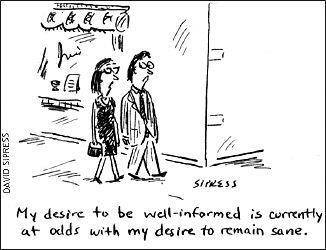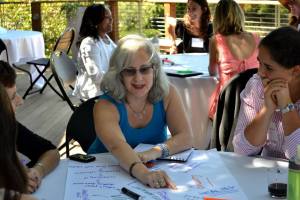Inevitably in an Art of Hosting training someone will ask about how to bring AoH patterns and practices to a group or organization that is not familiar with AoH and may not be ready to receive them with open arms. When we say, “That is when you use ‘stealth hosting’”, people laugh and the room lights up.

Jerry Nagel and I, and colleagues we co-host with regularly, almost always start an AoH training with PeerSpirit circle practice. It sets the tone for the whole training. While most people love entering this space, find the opening practices thoughtful and calm, slowing the frenetic pace many are caught up in, inviting people to take a breath, to show up in the fullness of who they are, the thought of bringing it to their organization, understandably, gives them pause.
Art of Hosting uses language that is not a part of the organizational cultures many people work in, that is not familiar and can sound strange. Hosting. Harvesting. Container. Collective intelligence. Not to mention World Café, Open Space or Circle Practice. Then there is the use of a talking piece and a bell.
The use of language is purposeful and, we are really clear, it is not necessarily the use of language that allows these practices to be successful. It is the intention with which we bring them. We might never use the terminology of AoH with a client as we are not interested in promoting any particular practice as much as we are interested in meeting the needs and outcomes of the work we have identified with the client. When we talk to the client about the outcomes, we can often offer them a range of ways to get to outcomes. They can be quite receptive when they see the link to what it is they want done.
 Many participants in a training see the possibility of starting to bring AoH practices using check-ins and check-outs, but the idea of naming circle practice or bringing a talking piece feels intimidating and risky – and we get that. We offer there is no need to name circle practice and you can use or not use a talking piece, but you do need a good question. We suggest not using the same question all the time as it can grow stale and in anticipation of the same question people can tune out. If you tune the question into the purpose of the meeting it is useful and can be a great place to start.
Many participants in a training see the possibility of starting to bring AoH practices using check-ins and check-outs, but the idea of naming circle practice or bringing a talking piece feels intimidating and risky – and we get that. We offer there is no need to name circle practice and you can use or not use a talking piece, but you do need a good question. We suggest not using the same question all the time as it can grow stale and in anticipation of the same question people can tune out. If you tune the question into the purpose of the meeting it is useful and can be a great place to start.
If you do use a talking piece, then using something that is either playful and fun or related to the organization is a great place to begin. This can be done in a light hearted but intentional manner. You can preface it by saying, “We are all here physically but sometimes it takes a few minutes to bring our attention to the topic at hand. Today we want to try something a little different, to begin with a check in to help us do that, to bring our full attention to the task at hand.” We might say at an AoH training that we want you to bring the fullness of your humanity. That might not work in your team, but turning our attention more fully to the task at hand might get better mileage.
If you want to use a talking piece you can introduce it quite simply. “Just to make sure we all have a moment to collect our thoughts and speak without interruption, let’s use a talking piece. When you have it, it is your turn to talk. When you don’t have it, it is your turn to listen. We’ll send it around the room until we have all had a chance to speak.” Get people’s permission and it will feel less impositional. Often we are sitting at a table rather than in a circle of chairs and there is nothing wrong with that.
If using a talking piece feels too risky or strange, you can simply say, “It would be good to hear everyone’s voice here before we begin, so let’s go around the table one at a time to answer our question.” The key is to re-enforce and honour the practice. If people continue to talk all over each other, then it can defeat the purpose. But if you can interject gently or humourously, you can bring things back on track. It is not to control what is happening, but it is to invite a flow that achieves the objectives you have for the practice. There is clear research that the sooner people are invited to speak in a meeting, the greater the likelihood they will continue to contribute. If this doesn’t happen, there is a greater chance the dominant voices will, well, dominate.
While it might seem strange at first, invariably your meeting participants will notice that the meeting has a different quality to it than when they jump right into item 1 on the agenda. Before long, people are often asking to begin with a check in. The same with a check out. It doesn’t have to be long and it can seal the meeting before everyone wanders off to the next meeting on their schedule.
For other methodologies you might want to use, you can strategize good ways to bring them into practice. From our own experience working with clients, we match outcomes to methods. If a client wants to connect people, allow them lots of opportunity to talk with each and get to common themes and patterns on a particular topic, then World Café could be a good option. If they want to engage people in ideas, get commitment to initiatives or get to issues and opportunities you don’t know exist, Open Space allows participants to create their own agenda and follow their passion to the ideas that have the most energy for them. In teams and organziations we’ve worked with that are experiencing a lot of tension and want to resolve it in a healthy way, circle is a good practice.
 It is not absolute what to use when, but when you are clear on the purpose you are working towards, and have an understanding of the way the methods work, selection becomes easier. In your organization, as you get clarity on outcomes, you could offer out ideas. “We’ve never tried this before but I have experienced (method) and it was a really great way to do (whatever it is you want to do).”
It is not absolute what to use when, but when you are clear on the purpose you are working towards, and have an understanding of the way the methods work, selection becomes easier. In your organization, as you get clarity on outcomes, you could offer out ideas. “We’ve never tried this before but I have experienced (method) and it was a really great way to do (whatever it is you want to do).”
I once did a World Café with a window installations company with the whole staff including the installers. The purpose was to identify the biggest irritants in the work environment and causes of delays in their ability to get installations done in a timely fashion. We didn’t call it a World Café and they certainly didn’t need 20 minutes per round of conversation but we did have small groups and we did mix them up between rounds, using questions that got us to our end objective, which was their list of priorities to be addressed in that year by the company leadership.
If beginning with your own team is fraught with anxiety, find another environment to test out and experiment, to grow your skill with new patterns and practices. Work with another department or in a voluntary capacity. And, there are good reasons we say, don’t work alone. It is always easier to share the risk, plus we are more creative, when we work with other people. And, we have each other’s backs. You can make it fun and stay tuned into outcomes. The more you try it, the more success you have, the more you will trust the methodologies to deliver.
Look for success stories to share with your team or your boss or whoever it is that might need to approve a new way of moving forward. We are capturing a few under the category of Art of Hosting Works here on the Shape Shift blog – small inspirational-you-can-do-it-anywhere examples to long-term projects.
The language we choose with Art of Hosting is intentional. It signals a different approach, a different way of thinking about and doing things. However, if we become attached to the language, we risk losing the intention of what we are doing – bringing people together in different ways, to engage them more fully, hear them more clearly and find connections, inspiration and ideas that might not have existed before.
Take some care. Stealth host any opportunity you get. And we would love to hear and share your success stories too.



 From the first Worldview Intelligence program – Halifax, NS August 2014
From the first Worldview Intelligence program – Halifax, NS August 2014 

 Each day, watching the news, social media feeds or just being out in public, we are bombarded by
Each day, watching the news, social media feeds or just being out in public, we are bombarded by  This pattern contains four practices that fold onto and into each other. For a simple pattern it contains much wisdom.
This pattern contains four practices that fold onto and into each other. For a simple pattern it contains much wisdom.


 And it has inspired both of them to be on the calling team for an Art of Hosting offering in Philadelphia in February 2016 called
And it has inspired both of them to be on the calling team for an Art of Hosting offering in Philadelphia in February 2016 called  Have you ever wanted to start an important conversation with someone about something you experienced with them but have not known where or how to start? Have you asked them if you could give them “feedback” – or, even, “critical feedback”? Have you tried to shore up the importance of your message by referencing nameless, multiple others that you’ve talked to who feel exactly the same way you do?
Have you ever wanted to start an important conversation with someone about something you experienced with them but have not known where or how to start? Have you asked them if you could give them “feedback” – or, even, “critical feedback”? Have you tried to shore up the importance of your message by referencing nameless, multiple others that you’ve talked to who feel exactly the same way you do? It takes
It takes 








